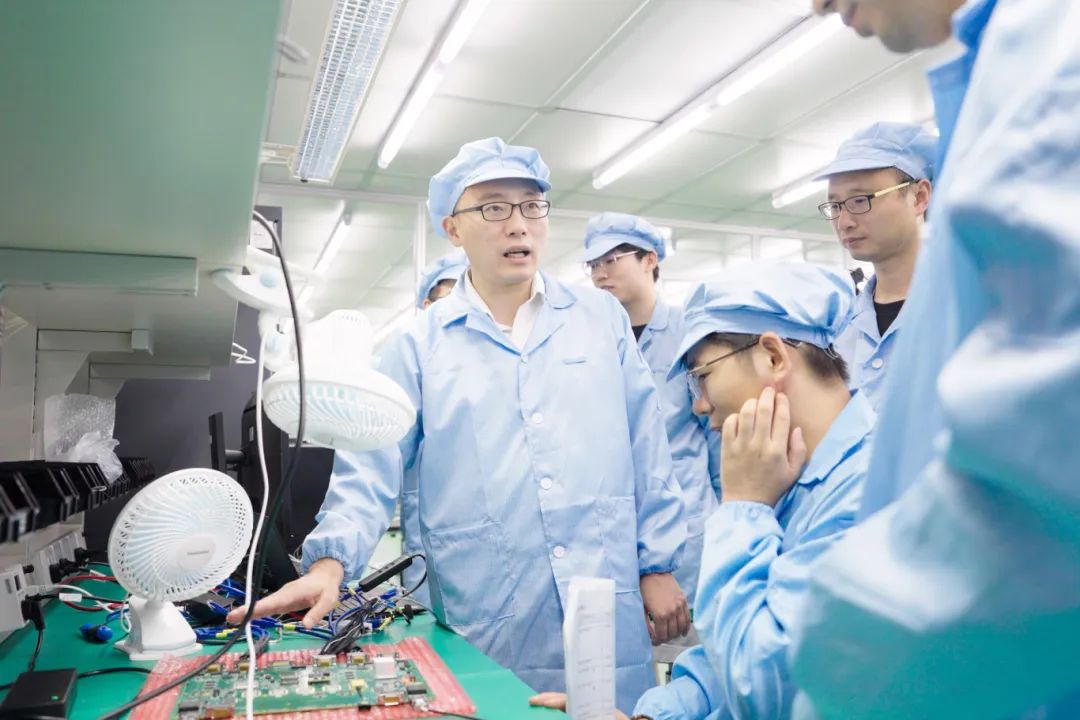

The Zhijia X2 Onboard Intelligent Computer developed by the Research Center for Space Computing System of Zhejiang Lab (ZJ Lab) was successfully launched at 10:31 on September 24, 2024, in the nearby sea area near Haiyang, Shandong Province, aboard the Xingshidai-21 satellite developed by Chengdu Guoxing Aerospace Technology Co., Ltd. (ADA Space).
The event took place just over six months after ZJ Lab's first onboard intelligent computer was successfully sent to outer space.
Onboard Computer-Brained Satellite
Satellites watch the Earth in the depths of space all the time, tracking its movements in real time and transmitting signals from it.
"A satellite sends its received images back to the Earth, and then the data processing center on the ground analyzes these images and reaches our desired conclusion. It's a classic model of 'space sensing and ground computing'." LI Chao, Deputy Director of ZJ Lab's Research Center for Space Computing System, said that under the "space sensing and ground computing" model, inefficient satellite data transmission results from bandwidth limitations, and also causes heavy data loss. "The high-latency, high-loss process consumes a lot of resources, and it will not help us to gain prompt access to data in case of an emergency."

Satellite Onboard Intelligent Computer
An onboard intelligent computer acts like the brain of any satellite. The system is expected to perform real-time processing of the data sent from the satellite on-orbit.
Zhijia X2, for example, can implement on-orbit target detection, intelligent image compression, cloud identification and other functions. "A 4-5G image, processed by Zhijia X2, can shrink to one-tenth of its original size with no change in resolution, which greatly saves the transmission bandwidth." LI Chao added that if the satellite imagery is hindered by the presence of clouds, the computer can automatically recognize the situation and choose not to take photos. It can also automatically filter out images with clouds, truly realizing "space sensing and ground computing".

Zhijia X2 Concept Map
Even more noteworthy is the fact that the newly launched Zhijia X2, palm-sized, can perform 32 trillion operations per second. It boasts a lower power consumption than the Zhijia X1 by 50% and a lighter weight by 30%. "Cost-effectiveness is a key factor in space technology, and satellite costs will be substantially reduced as a result of smaller power consumption and weight", said LI Chao.
Building a Space Computing System to Send Up Our Computational Power
The Research Center for Space Computing System aims to build a space computing system. In LI's words, each satellite using existing technologies is like a kite, which has a "single line" connection with the Earth, leading to quite limited time for satellites to communicate with ground stations.
In the space computing system developed by ZJ Lab, one satellite can be connected to other satellites via a high-speed laser communicator, so as to realize real-time sharing and transmission of data. Once the on-orbit processing is completed with computational payloads, the data will be transmitted back to the Earth, shortening space-to-ground data transfer time from the order of hours to minutes.
ZJ Lab is counting down to its first constellation mission for the space computing system. "Our biggest challenge is reliability." LI Chao explained that we may experience problems in sending up computational power. For example, single-event effects in devices are induced by particles in the space radiation environment, which will cause a single-event upset (SEU) in sensitive devices that ultimately leads to a system crash. In order to ensure on-orbit reliability of software and hardware design, it is common for team members to work overtime to tackle key problems and stay up all night. Eventually, multi-level software self-healing technology, and SEU and SEL (single event latch-up) mitigation techniques were developed to ensure long-term and reliable on-orbit servicing for onboard intelligent computers.

LI Chao and Team Members
Accelerating Scientific Research Through Institutional Innovation
It is almost impossible to accomplish iterative upgrades of onboard intelligent computers and product delivery by conventional research methods in just six months, but this is also a vivid example of ZJ Lab's innovation in scientific research systems and mechanisms.
So far this year, ZJ Lab has intensified efforts to carry out organized research, established a comprehensive planning regime for major research tasks, and formed a working mechanism for interdisciplinary collaboration on technology and administration driven by major research tasks. That is, the director of administration is responsible for coordinating human, financial and material resources required for the tasks, while the chief engineer is responsible for the technology route, solutions and outcomes in relation to the tasks. LI Chao also serves as deputy chief engineer of the space computing system research task. "I just need to assist the chief engineer with quality control in technology, and other affairs are coordinated by the administration line. This mode helps ease our workload."
The comprehensive planning regime draws on the advanced experience of the aerospace sector, but it is not a copycat. "The comprehensive planning regime of ZJ Lab is an open system that integrates internal and external advantageous innovation resources, so our external partners are incorporated into the comprehensive planning regime for space computing systems." ZHAO Zhifeng, Chief Engineer of ZJ Lab and Director of Administration of Space Computing Systems, said, "ZJ Lab doesn't build rockets or satellites, but we do computing. However, the building of space computing systems requires opening up and cooperation, which means joining forces with dominant research institutions and enterprises in the field."

Joint Commissioning and Testing by Researchers of ZJ Lab and ADA Space
At present, the space computing system brings together more than 10 leading domestic enterprises and research institutions in the aerospace field, including ADA Space, HiStarlink, Tianlian TT&C, Emposat, and STAR.VISION.
At the upcoming third Global Digital Trade Expo, ZJ Lab's exhibition area will offer a comprehensive show of our planning and achievements related to the space computing system. We also hope to see more of our industry peers join us in realizing the vision for space computing.











